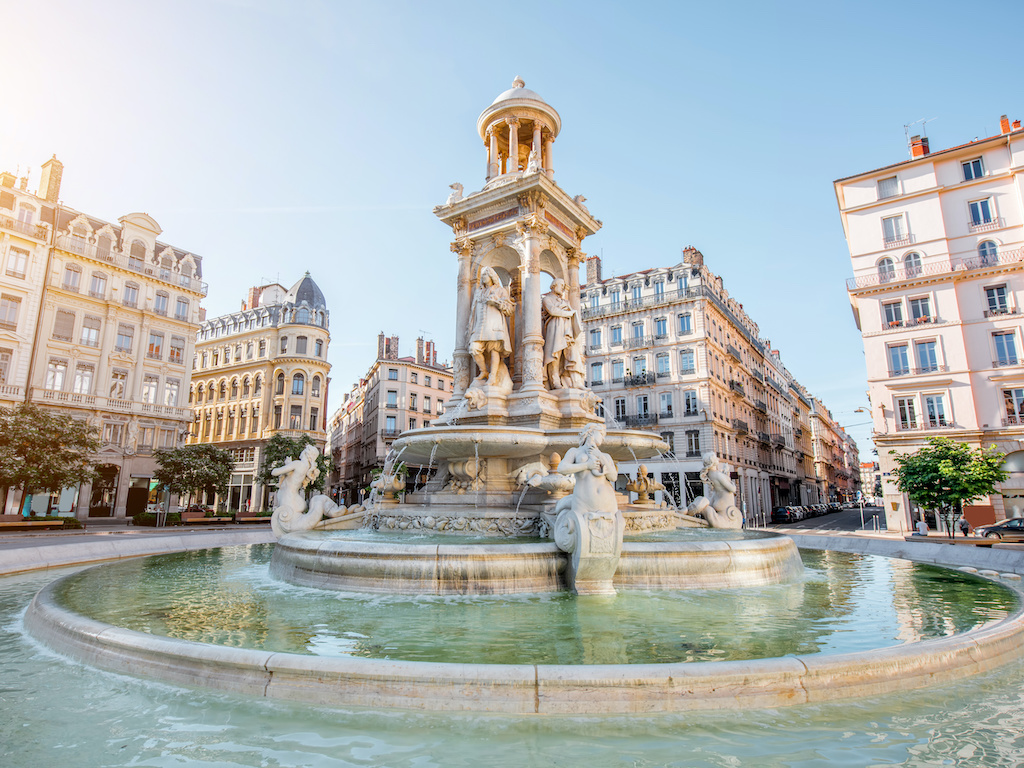
The Vieux-Lyon district is the first "preserved sector" in France and is one of the best-preserved Renaissance neighborhoods in the world. The three sectors that make up the district have retained all the charm of their period buildings, including their famous traboules, narrow streets, and Italian-style galleries. The Michaël Zingraf Real Estate blog takes you to this emblematic place full of history.
The Vieux-Lyon district in the Middle Ages
The Vieux-Lyon is located in the 5th arrondissement of the city, at the foot of the Fourvière hill. Nestled on the edge of the Saône on a narrow strip of land, it took on its current configuration during the Middle Ages. Three neighborhoods made up this territory previously occupied by stonecutters and ceramists (due to its proximity to the river): Saint-Jean, which housed the clergy (it is home to one of the oldest churches in Lyon); Saint-Georges, which was still just a quay; and Saint-Paul, to the north, where the first stone bridge connecting the Saône to the Presqu'île was built in 1070.
The Golden Age of the Vieux-Lyon during the Renaissance
Although the Vieux-Lyon district was already established in the Middle Ages, it truly flourished during the Renaissance. Taking advantage of the city's influence at that time, the sector became the center of commercial exchanges and hosted four major fairs attracting numerous visitors. Bankers and wealthy Italian families settled in the neighborhood, including the famous Gadagne family. During this period, the constructions were initiated by Florentine architects who accompanied Catherine de Medici to the court of her husband, King Henri II, son of the French King Francis I.
The Traboules of Vieux-Lyon
The traboules that can currently be found in Vieux-Lyon were built during the Renaissance period, and there are approximately 215 courtyards and traboules. These passageways, which traverse the buildings, were constructed following the model of Roman patios, with galleries overlooking a courtyard where a well is usually located. However, traboules are not exclusive to the Vieux-Lyon district. They can be found in several neighborhoods in Lyon and a few other cities in the Auvergne-Rhône-Alpes region.
The Vieux-Lyon district today
In 1964, the Vieux-Lyon district underwent an unprecedented renovation plan. The neighborhood was in a state of disrepair, and several urban projects led by Mayor Louis Pradel planned for its destruction. The Renaissance du Vieux-Lyon association strongly opposed these plans and succeeded in convincing André Malraux, then Minister of Culture, to designate Vieux-Lyon as the first "preserved sector" in France. Numerous rehabilitation operations began, highlighting the district's heritage and attracting many artisans and businesses. More than two-thirds of the period buildings have regained their splendor. In 1998, the district was inscribed as a UNESCO World Heritage site.
Today, Vieux-Lyon forms a 24-hectare Renaissance architectural complex. It is the largest and best-preserved Renaissance neighborhood in the world after Venice. Highly touristic, it attracts visitors from all over the world thanks to its exceptional architectural heritage and the numerous restaurants, shops, and boutiques that animate the area day and night, especially in the well-known and frequented Saint-Jean neighborhood.
If you are interested in buying an exceptional property in Vieux-Lyon, the Michaël Zingraf Real Estate agency in Lyon, a specialist in luxury real estate, offers exclusive sales offers in the most prestigious sectors of the Vieux-Lyon district. You can also find a range of high-end apartments in all the most beautiful neighborhoods of Lyon.



